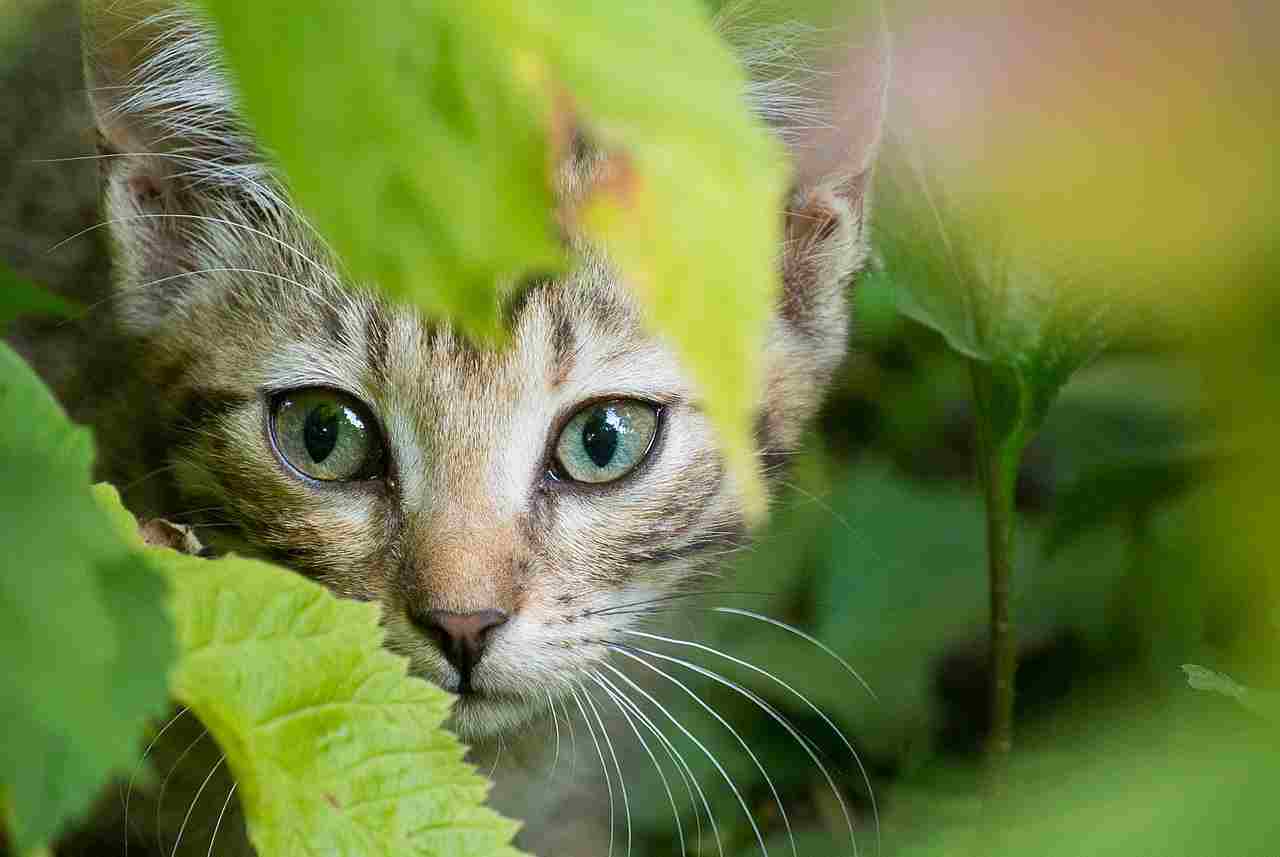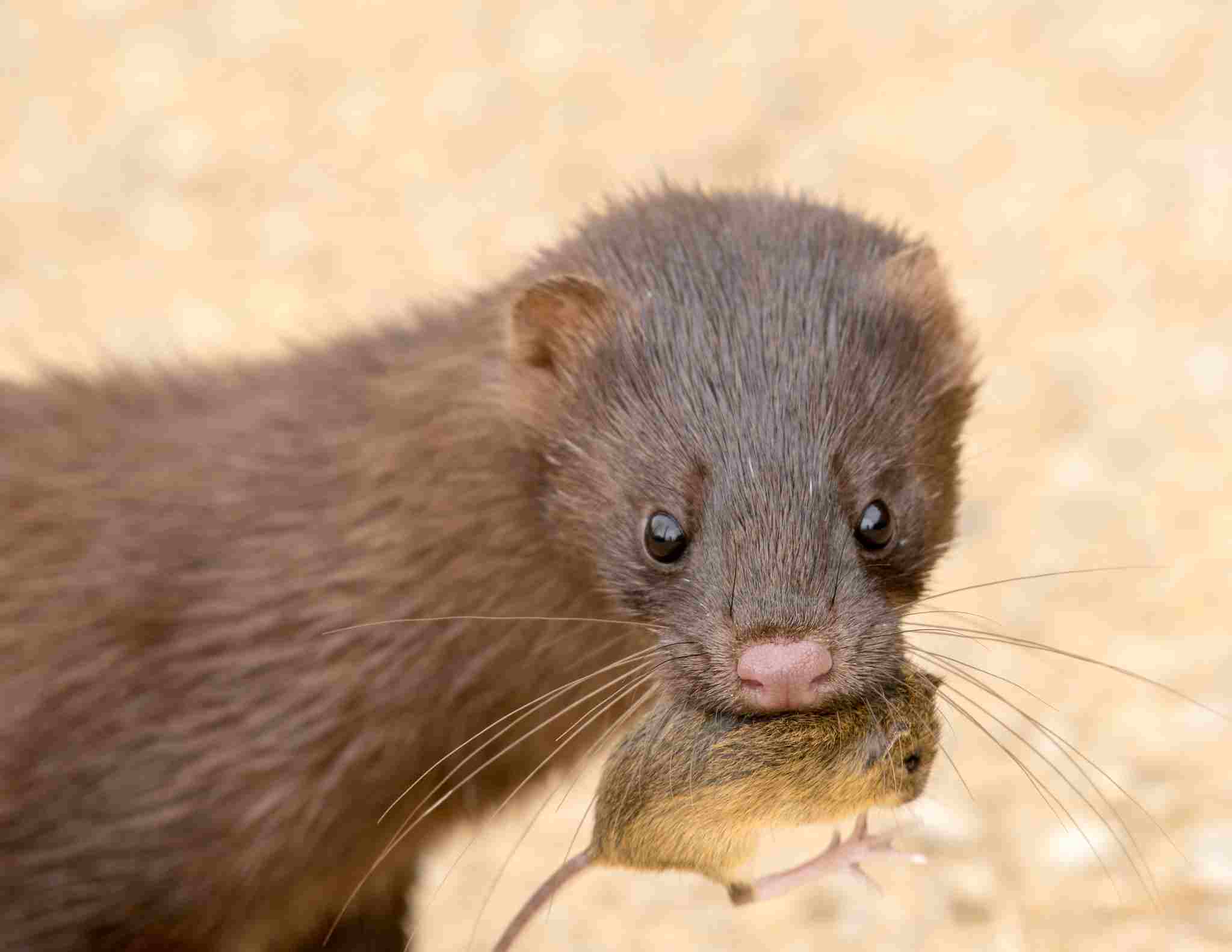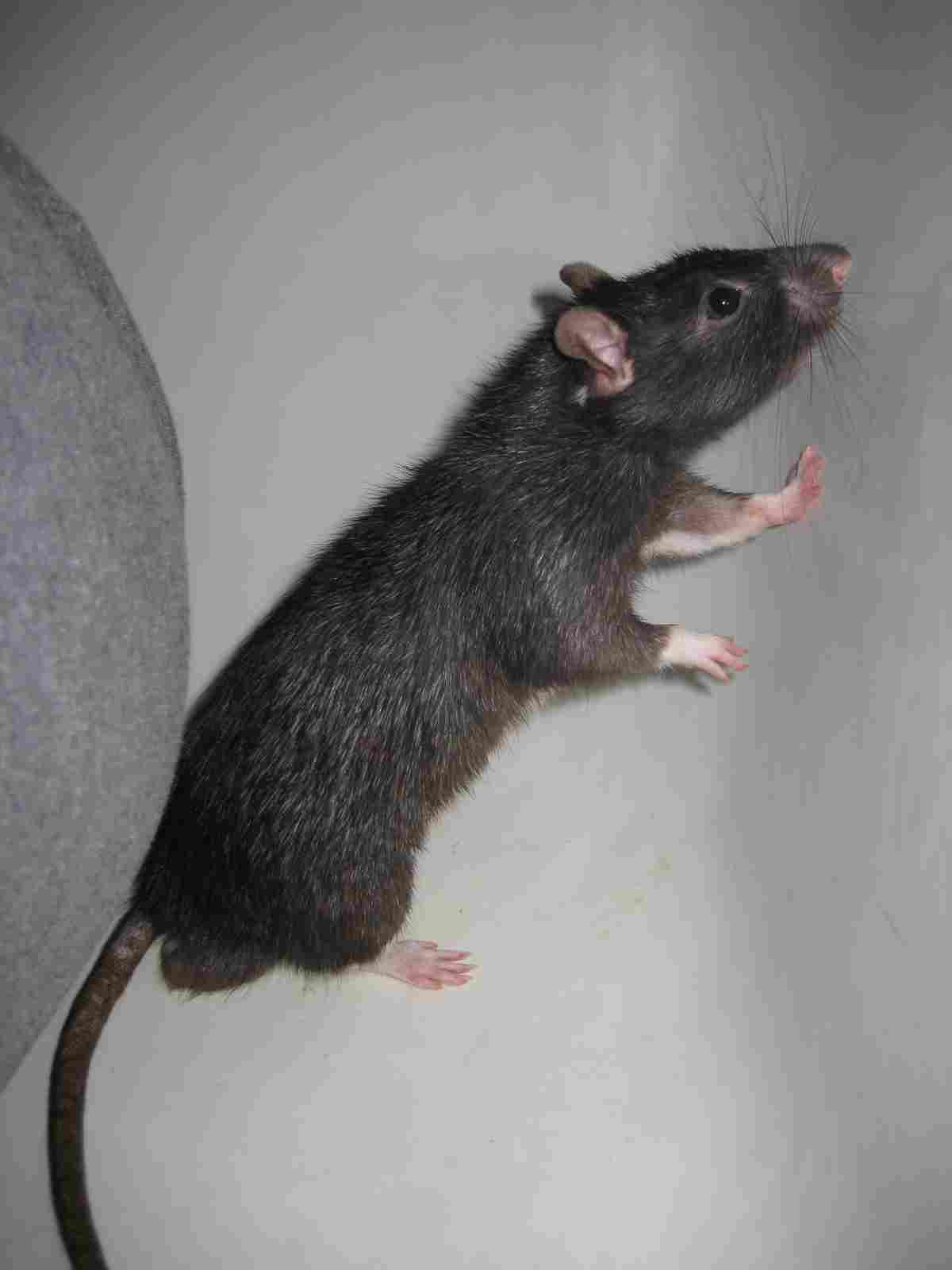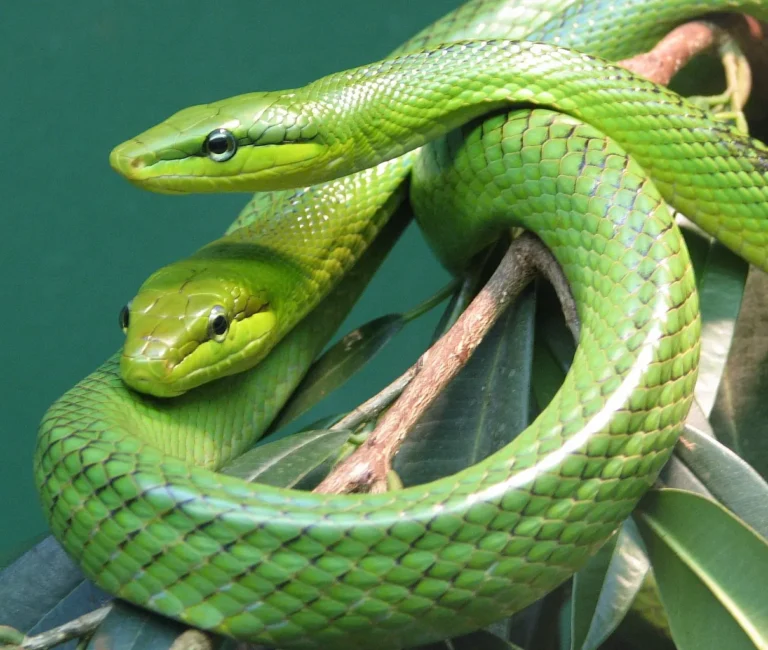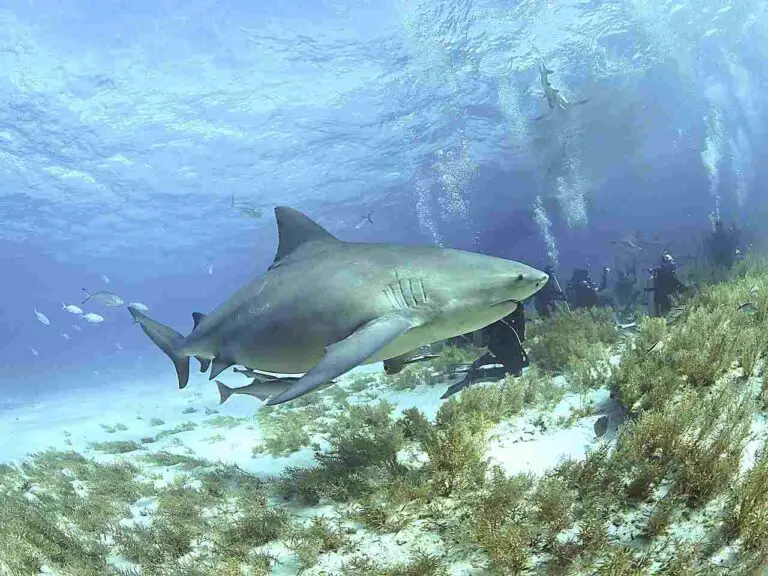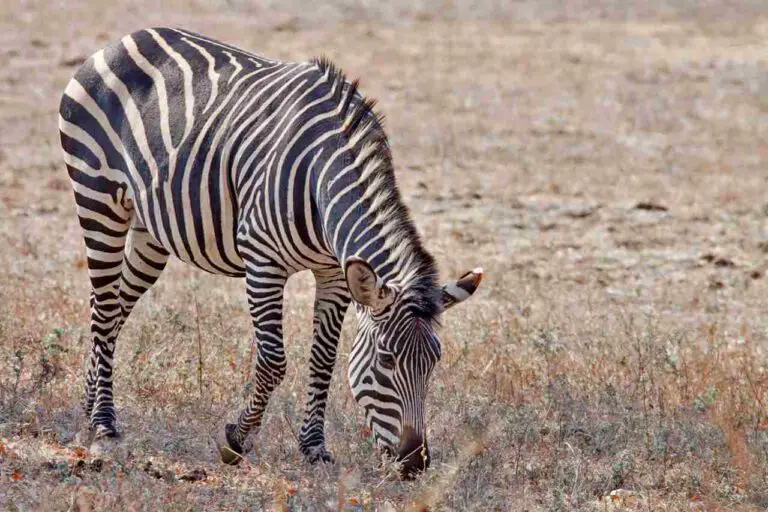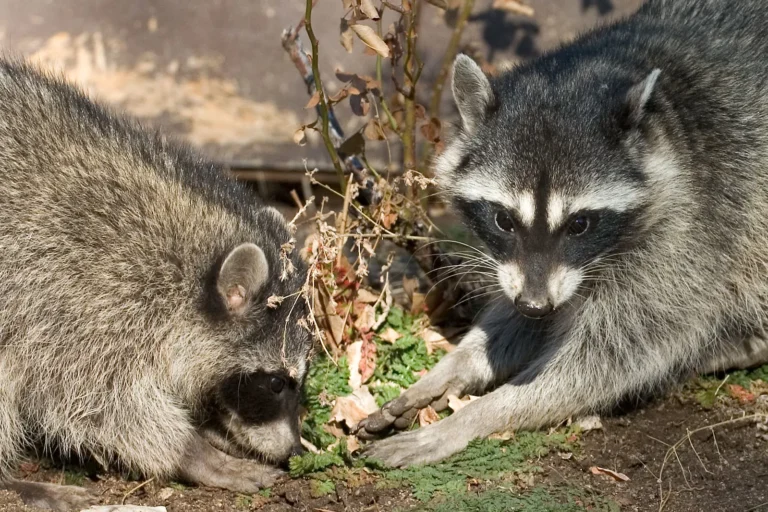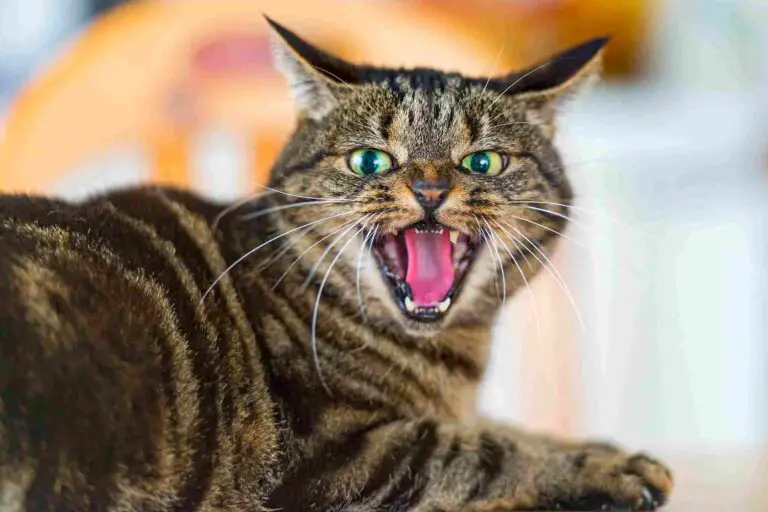Ferret Vs Rat Intelligence, Size, Weight, Overall Comparison
In an envisaged encounter between a ferret and a rat, two small and popular pets, we explore the potential dynamics of this confrontation. Ferrets, known for their intelligence and sociability, contrast with the smaller and more easily handled rats. This analysis aims to highlight the distinctions between ferrets and rats, emphasizing that, in a confrontation, ferrets would likely emerge as the victors due to their superior intelligence and possession of predatory features.
Ferret vs Rat: Assessing the Likely Victor in a Confrontation
In a hypothetical scenario involving a ferret and a rat, both popular small pets, the outcome of a fight is influenced by their intelligence, sociability, size, and predatory features. While rats may be smaller and more manageable as pets, ferrets, with their greater intelligence and predatory nature, are likely to dominate in a confrontational scenario. This is why rats often serve as prey for ferrets.
I). Intelligence and Sociability Differences:
– Ferrets are known for their high intelligence and sociable nature. They often form strong bonds with their owners and can be trained to perform various tricks. Rats, while also intelligent, may not exhibit the same level of sociability as ferrets.
II). Ferret’s Friendliness and Less Independence:
– Ferrets are generally more friendly and less independent than rats. They seek social interaction and enjoy being around humans, making them affectionate companions. Rats, while capable of forming bonds with owners, may display more independent behavior.
III). Size and Physical Attributes:
– Ferrets are larger and possess certain physical attributes that contribute to their predatory nature. Rats, being smaller and more delicate, are not as equipped for physical confrontations. The size and physical advantages of ferrets may play a crucial role in the outcome of a fight.

IV). Ferret’s Predatory Features:
– Ferrets have inherent predatory features, including sharp teeth and claws. Their intelligence, combined with these predatory attributes, makes them effective hunters. In a confrontation, ferrets are likely to use their predatory instincts to gain the upper hand.
V). Handling Differences:
– Rats are often considered more manageable and easier to handle as pets due to their smaller size. However, in a fight, the ferret’s larger size and predatory nature would likely outweigh the handling advantages of rats.
VI). Overall Dynamics:
– In this hypothetical scenario, ferrets are likely to emerge as the victors in a fight against rats. Their greater intelligence, size, and possession of predatory features contribute to their dominance in confrontational situations. While rats may be smaller and more easily handled as pets, the overall dynamics favor the ferret in this hypothetical confrontation.
*Details of Comparison
| Criteria | Ferret | Rat |
| Taxonomy | Mustela putorius furo |
Varies (e.g., Rattus norvegicus, Rattus rattus)
|
| Appearance | Slender, pointed snout, short coat |
Compact, pointed snout, varied fur length and color
|
| Size | 18-24 inches (including tail) |
9-11 inches (body); up to 8 inches (tail)
|
| Weight | 1.5 to 4 pounds |
Varies by species; generally 0.5 to 1 pound
|
| Bite Force (PSI) | 150-200 PSI |
Around 7,000 PSI adjusted for size
|
| Physical Offensive Adv. | Sharp claws, agile movements |
Strong incisors, climbing abilities
|
| Physical Defensive Adv. | Flexible body, anal scent glands |
Quick reflexes, ability to squeeze into small spaces
|
| Speed | Up to 20 mph | Up to 8 mph |
| Agility | Slim, flexible body, sharp turns |
Agile, climbing, jumping
|
| Overall Physical Cap. | Swift and agile movements, well-developed senses |
Versatile physical abilities, adaptable senses
|
| Habitat Preference(s) | Open grasslands, burrows; domestic ferrets adapt to households |
Highly adaptable, found in various environments
|
| Tracks | Claw marks, bounding pattern |
Paw prints, clear toe marks, tail drag marks
|
| Lifespan | 6 to 10 years (captivity) |
Wild: 1 to 3 years; Domestic: 2 to 3 years
|
| Mode of Feeding | Carnivorous, meat-based diet |
Omnivorous, varied diet
|
| Intelligence | Problem-solving skills, curiosity |
Highly intelligent, used in scientific studies
|
| Social Behavior | Solitary hunters, can form social groups |
Highly social, lives in colonies with complex hierarchies
|
| Mode of Reproduction | Seasonal breeders, gestation 41-42 days, 3-7 kits |
Rapid breeders, year-round reproduction, gestation 21-23 days, 6-12 pups
|
| Parental Behavior | Protective mothers, weaned around 6-8 weeks |
Maternal care, weaned around 3-4 weeks
|
| Proximity to Human-Inhab. | Domestic ferrets as pets; wild ferrets near human agriculture |
Adaptable to urban environments, found near human dwellings
|
| Behavior Toward Humans | Tolerant of human interaction, domestic ferrets can form bonds |
Domestic rats can be affectionate pets; wild rats may be cautious
|
| Danger Posed to Humans | Generally not dangerous; may bite if provoked |
Generally not dangerous; wild rats can transmit diseases
|
| Associated Precautions | Handle with care, vaccinations for zoonotic diseases |
Precautions against disease transmission, hygiene practices
|
| Conservation Status | Domestic ferrets not endangered; black-footed ferret (wild) endangered |
Various species with diverse conservation statuses
|
1. Taxonomy:
Ferret:
Kingdom: Animalia
Phylum: Chordata
Class: Mammalia
Order: Carnivora
Family: Mustelidae
Genus: Mustela
Species: M. putorius furo (domestic ferret)
Rat:
Kingdom: Animalia
Phylum: Chordata
Class: Mammalia
Order: Rodentia
Family: Muridae (includes various rat species)
Genus: Rattus (e.g., R. norvegicus – brown rat, R. rattus – black rat)
Species: Varies based on specific rat species
2. Appearance:
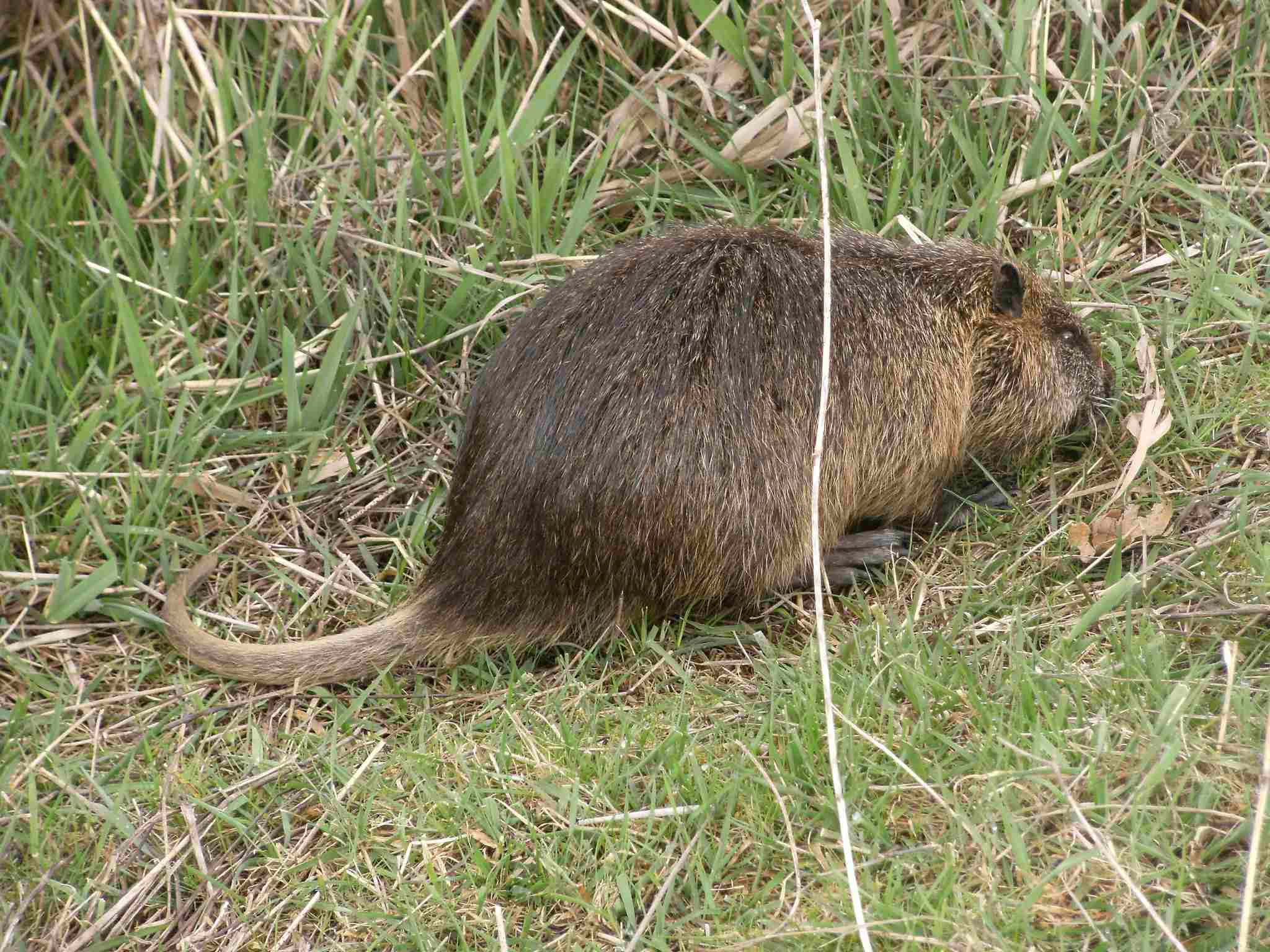
Ferret:
Slender, elongated body with a pointed snout.
Typically has a short, sleek coat, and colors can vary.
Domestic ferrets are selectively bred for various coat colors.
Rat:
Compact, cylindrical body with a pointed snout.
Fur can be short or long, and colors range from brown to black.
Varied appearance among rat species; tail length and fur texture differ.
Comparison: Ferrets and rats both share a similar body shape with a pointed snout, but ferrets are generally more slender, whereas rats have a more compact build.
Ecological Implications: The distinct appearances of ferrets and rats can influence their roles in ecosystems. Ferrets, being carnivores, may impact small mammal populations, while rats, as omnivores, can have a broader ecological influence, including seed dispersal and scavenging.
3. Size:
Ferret:
Length: 18-24 inches (including tail)
Height: 4-5 inches at the shoulder
Rat:
Length: 9-11 inches (body); up to 8 inches (tail)
Height: 3-4 inches at the shoulder
Comparison: Ferrets are generally larger than rats, both in body length and height. The size difference contributes to variations in their ecological roles and interactions within ecosystems.
Ecological Implications: Larger size in ferrets may make them more effective predators of certain prey, while rats, being smaller, might have advantages in navigating different environments.
4. Weight:
Ferret:
Typically 1.5 to 4 pounds
Rat:
Varies by species; generally 0.5 to 1 pound
Comparison: Ferrets are heavier than rats on average, reflecting differences in their dietary needs and overall physiology.
Ecological Implications: Weight influences factors such as predation success and resource utilization. Ferrets, being heavier, may have a greater impact on prey populations compared to lighter rats.
5. Bite Force (PSI – Pounds per Square Inch):

Ferret:
Estimated around 150-200 PSI
Rat:
Estimated around 7,000 PSI (adjusted for size)
Comparison: Despite the apparent strength difference, rat bite force, when adjusted for size, can be surprisingly strong. Ferrets, while having a substantial bite force, may rely on other hunting strategies.
Ecological Implications: Bite force relates to the predator’s hunting techniques and prey selection. Ferrets may employ a precise bite, while rats, with their strong bite, can adapt to a wider range of food items, impacting ecosystems differently.
6. Physical Offensive Advantages:
Ferret:
Sharp claws and teeth for hunting small prey.
Agile and capable of quick, coordinated movements.
Rat:
Strong incisors for gnawing and a versatile diet.
Excellent climbers, allowing access to various food sources.
Comparison: Ferrets have specialized tools for hunting, including sharp claws and teeth, emphasizing their carnivorous nature. Rats, with strong incisors and climbing abilities, exhibit adaptability in obtaining diverse food resources.
Ecological Implications: Ferrets’ offensive capabilities may impact small mammal populations more directly, while rats’ adaptability contributes to their success in various environments.
7. Physical Defensive Advantages:
Ferret:
Flexible body for evading predators.
Anal scent glands for releasing a musky odor as a defensive mechanism.
Rat:
Quick reflexes and agility to escape predators.
Ability to squeeze into small spaces as a means of defense.
Comparison: Both ferrets and rats rely on agility and flexibility for defense. Ferrets deploy anal scent glands for additional protection, while rats use their ability to squeeze into tight spaces.
Ecological Implications: Defensive strategies influence how these animals interact with predators and their overall survival in different ecological niches.
8. Speed (Km/hour or Mile/hour):
Ferret:
Can reach speeds up to 20 mph (32 km/h).
Rat:
Can run at speeds up to 8 mph (13 km/h).
Comparison: Ferrets are faster runners than rats, reflecting their different hunting strategies and ecological roles.
Ecological Implications: Speed affects the efficiency of hunting and evasion from predators, contributing to the animals’ adaptation to specific environments.
9. Agility:

Ferret:
Highly agile with a slim, flexible body.
Can make sharp turns and navigate through tight spaces.
Rat:
Extremely agile, capable of climbing, jumping, and balancing.
Nimble movements aid in foraging and avoiding predators.
Comparison: Both ferrets and rats showcase remarkable agility, but ferrets may excel in swift ground movements, while rats demonstrate agility in both terrestrial and arboreal environments.
Ecological Implications: Agility influences an animal’s ability to obtain food, evade predators, and navigate diverse habitats, contributing to their ecological roles.
10. Overall Physical Capacity:
Ferret:
Adapted for swift and agile movements.
Well-developed senses for hunting.
Rat:
Versatile physical abilities for climbing, digging, and swimming.
Highly adaptable senses for locating food and avoiding predators.
Comparison: Ferrets emphasize speed and agility for efficient hunting, while rats showcase versatility in physical activities, contributing to their success in different environments.
Ecological Implications: The overall physical capacity of each species shapes their ecological roles, determining their impact on local ecosystems.
11. Habitat Preference(s):
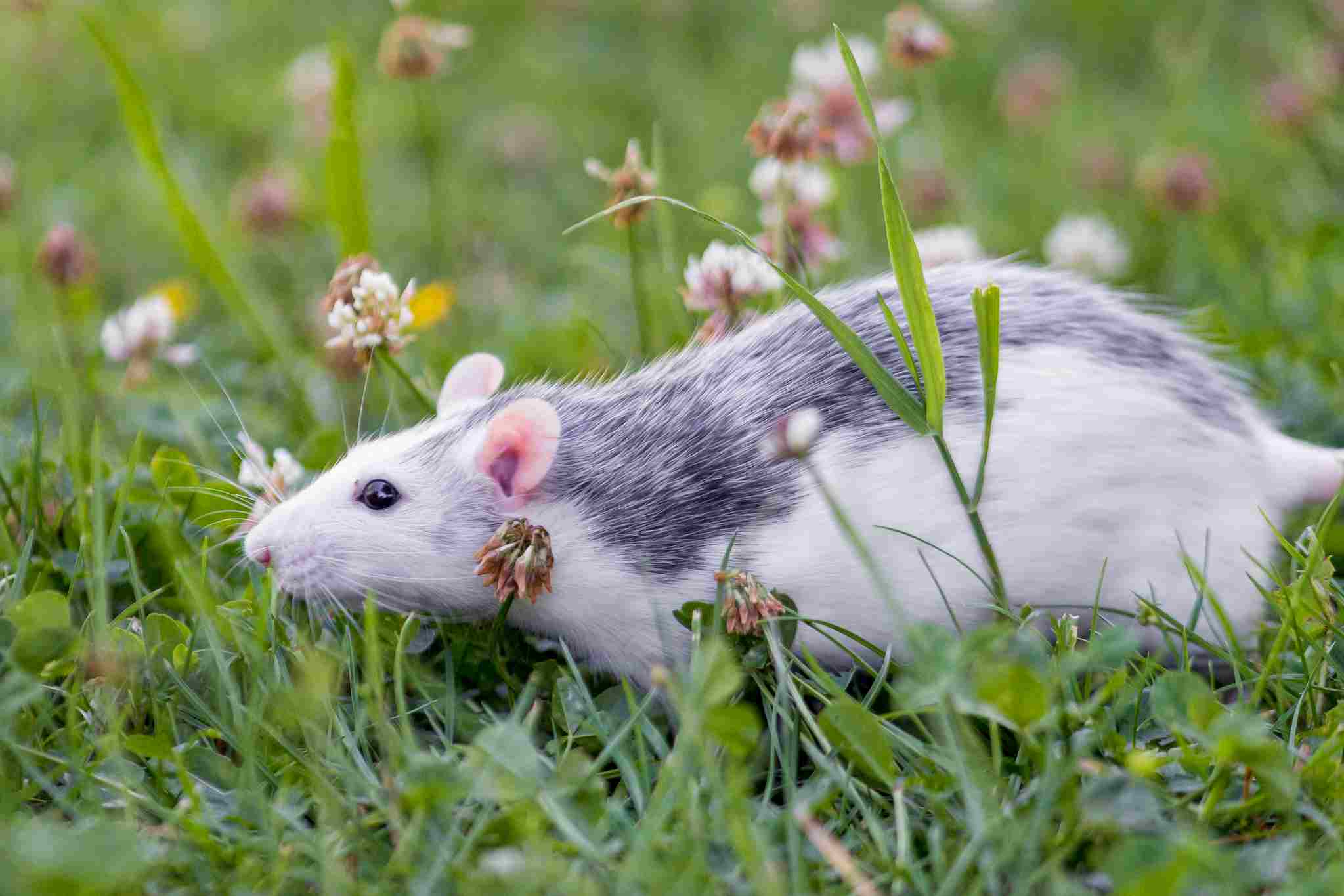
Ferret:
Prefer open grasslands and burrows.
Domestic ferrets adapt well to human households.
Rat:
Highly adaptable, found in various environments, including urban areas, forests, and fields.
Construct nests in burrows or hidden spaces.
Comparison: Ferrets and rats both display adaptability but may have different habitat preferences. Ferrets lean towards open spaces, while rats thrive in a broader range of environments.
Ecological Implications: Habitat preferences influence the distribution of these species and their interactions with other organisms in the ecosystem.
12. Tracks:
Ferret:
Claw marks may be visible in tracks due to sharp claws.
Tracks may show a bounding pattern, reflecting their agile movement.
Rat:
Paw prints with clear toe marks.
Tail drag marks may be present.
Comparison: Ferret tracks may exhibit more claw marks, emphasizing their predatory adaptations. Rat tracks, with clear toe marks and tail drags, highlight their distinctive anatomy.
Ecological Implications: Tracking these animals helps researchers understand their presence in different habitats and contributes to ecological monitoring.
13. Lifespan:
Ferret:
Typically 6 to 10 years in captivity.
Rat:
Wild rats: 1 to 3 years; Domestic rats: 2 to 3 years.
Comparison: Ferrets generally have a longer lifespan compared to rats, both in the wild and domestic settings.
Ecological Implications: Lifespan affects population dynamics and the ecological roles these species play over time. Longevity may influence their impact on local ecosystems.
14. Mode of Feeding:
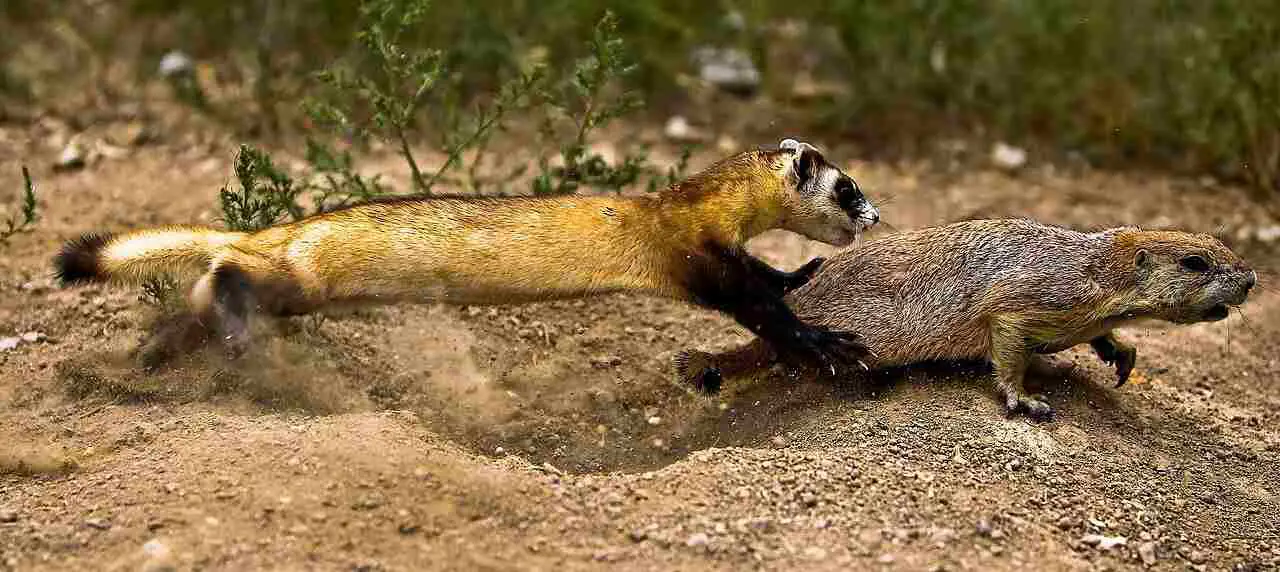
Ferret:
Carnivorous diet, primarily meat-based.
Hunt small mammals, birds, and insects.
Rat:
Omnivorous diet, consuming a variety of plant and animal matter.
Opportunistic feeders, scavenging on a wide range of food sources.
Comparison: Ferrets are obligate carnivores, relying solely on meat, while rats have a more flexible diet, consuming both plant and animal matter.
Ecological Implications: Differences in feeding preferences contribute to the ecological roles of these species, impacting prey populations and vegetation in their respective habitats.
15. Intelligence:
Ferret:
Display problem-solving skills and curiosity.
Domestic ferrets can be trained.
Rat:
Highly intelligent, capable of learning and problem-solving.
Used in scientific studies due to cognitive abilities.
Comparison: Both ferrets and rats exhibit high levels of intelligence, with rats being particularly notable for their problem-solving capabilities.
Ecological Implications: Intelligence influences foraging strategies, adaptability to changing environments, and interactions with other species in the ecosystem.
16. Social Behavior:
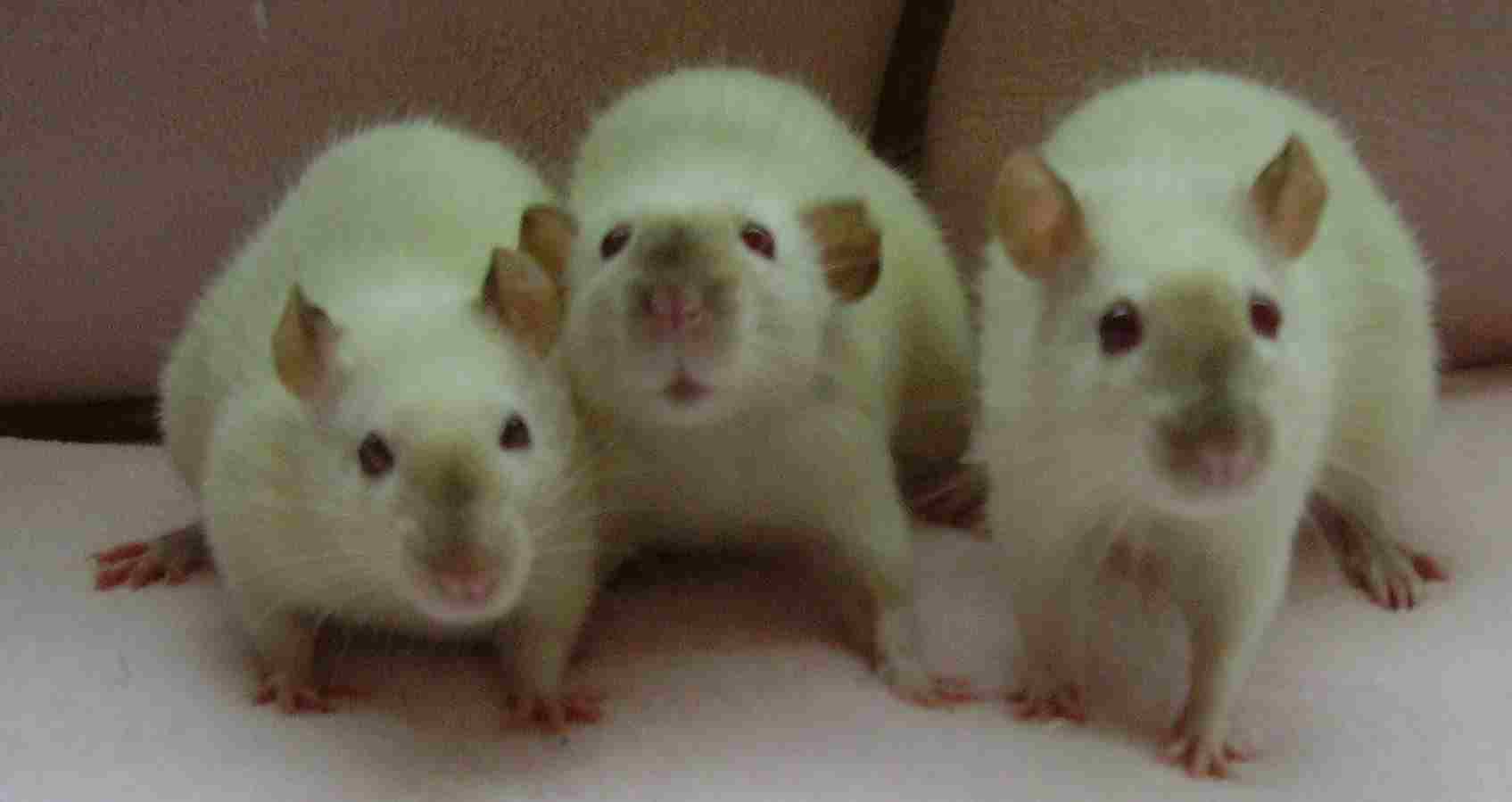
Ferret:
Solitary hunters but can form social groups.
Domestic ferrets often enjoy human and animal companionship.
Rat:
Highly social, living in colonies with complex hierarchies.
Form strong bonds and display cooperative behaviors.
Comparison: While ferrets can be social, rats are known for their intricate social structures and cooperative behaviors within colonies.
Ecological Implications: Social behaviors influence population dynamics and community structure within their respective habitats.
17. Mode of Reproduction:
Ferret:
Seasonal breeders, with a breeding season typically in spring.
Gestation lasts around 41-42 days, yielding a litter of 3-7 kits.
Rat:
Rapid breeders, capable of reproducing year-round.
Short gestation period (21-23 days) with litters ranging from 6-12 pups.
Comparison: Ferrets have a more seasonal and less prolific reproductive pattern compared to rats, which reproduce rapidly throughout the year.
Ecological Implications: Reproductive strategies impact population size and dynamics, influencing the ecological balance within their respective ecosystems.
18. Parental Behavior:
Ferret:
Female ferrets (jills) are protective of their kits.
Kits are weaned around 6-8 weeks but stay with the mother for socialization.
Rat:
Mothers (does) exhibit maternal care, nursing and grooming their pups.
Pups are weaned around 3-4 weeks but remain in the nest for additional care.
Comparison: Both ferrets and rats display maternal care, ensuring the well-being of their offspring during the early stages of life.
Ecological Implications: Parental behavior contributes to the survival and development of the young, influencing population dynamics within their ecosystems.
19. Proximity to Human-Inhabited Areas:
Ferret:
Domestic ferrets are commonly kept as pets.
Wild ferrets may inhabit areas with human agricultural activities.
Rat:
Highly adaptable to urban environments, often found near human dwellings.
Considered pests in some settings due to their proximity to human-inhabited areas.
Comparison: Rats have a notable association with human-inhabited areas, both as pests and, in some cases, as domesticated pets. Ferrets, particularly domestic ones, can also be found in human households.
Ecological Implications: The proximity of these species to human environments influences human-wildlife interactions, pest management, and potential impacts on local ecosystems.
20. Behavior Toward Humans:

Ferret:
Domestic ferrets can form bonds with humans and may enjoy play.
Tend to be more tolerant of human interaction.
Rat:
Domestic rats can become affectionate pets, forming strong bonds with their owners.
Wild rats may exhibit cautious or fearful behavior around humans.
Comparison: Both ferrets and rats, when domesticated, can exhibit positive interactions with humans. However, wild rats may be more wary.
Ecological Implications: The behavior of these species towards humans can influence their roles in ecosystems, particularly in areas where humans coexist with wildlife.
21. Danger Posed to Humans:
Ferret:
Domestic ferrets are generally not dangerous to humans.
May bite if provoked or mishandled.
Rat:
Generally not dangerous, but wild rats can transmit diseases.
Rare cases of aggression, especially if cornered or threatened.
Comparison: Both ferrets and rats pose minimal direct danger to humans, but there are potential risks, such as bites and disease transmission.
Ecological Implications: Understanding the potential risks associated with these species informs human-wildlife coexistence strategies and influences perceptions of these animals in various ecosystems.
22. Associated Precautions:
Ferret:
Handle domestic ferrets with care to avoid bites or scratches.
Keep vaccinations up-to-date to prevent potential zoonotic diseases.
Rat:
Take precautions against disease transmission, especially in areas with wild rats.
Employ proper hygiene practices when handling pet rats.
Comparison: Both ferrets and rats require precautions when interacting with humans. Domestic ferrets may pose a risk of bites, while rats, including pet rats, require measures to prevent disease transmission.
Ecological Implications: Human interactions with these animals necessitate responsible practices to minimize potential impacts on both human and animal health.
23. Conservation Status:

Ferret:
Domestic ferrets are not listed as endangered.
Black-footed ferret, a wild relative, is an endangered species.
Rat:
Various rat species; conservation status varies.
Some endemic rat species face threats due to habitat loss and predation.
Comparison: Ferrets, specifically domestic ones, are not endangered, but some wild relatives face conservation challenges. Rats, with numerous species, exhibit diverse conservation statuses.
Ecological Implications: Conservation statuses reflect the broader impacts of human activities on these species and their roles within ecosystems.
Summary of Comparison

Taxonomy:
Ferret: Mustela putorius furo
Rat: Varies (e.g., Rattus norvegicus, Rattus rattus)
Appearance:
Ferret: Slender, pointed snout, short coat
Rat: Compact, pointed snout, varied fur length and color
Size:
Ferret: 18-24 inches (including tail)
Rat: 9-11 inches (body); up to 8 inches (tail)
Weight:
Ferret: 1.5 to 4 pounds
Rat: Varies by species; generally 0.5 to 1 pound
Bite Force (PSI):
Ferret: 150-200 PSI
Rat: Around 7,000 PSI adjusted for size
Physical Offensive Advantages:
Ferret: Sharp claws, agile movements
Rat: Strong incisors, climbing abilities
Physical Defensive Advantages:
Ferret: Flexible body, anal scent glands
Rat: Quick reflexes, ability to squeeze into small spaces
Speed:
Ferret: Up to 20 mph
Rat: Up to 8 mph
Agility:
Ferret: Slim, flexible body, sharp turns
Rat: Agile, climbing, jumping
Overall Physical Capacity:
Ferret: Swift and agile movements, well-developed senses
Rat: Versatile physical abilities, adaptable senses
Habitat Preference(s):
Ferret: Open grasslands, burrows; domestic ferrets adapt to households
Rat: Highly adaptable, found in urban areas, forests, and fields
Tracks:
Ferret: Claw marks, bounding pattern
Rat: Paw prints, clear toe marks, tail drag marks
Lifespan:
Ferret: 6 to 10 years (captivity)
Rat: Wild: 1 to 3 years; Domestic: 2 to 3 years
Mode of Feeding:
Ferret: Carnivorous, meat-based diet
Rat: Omnivorous, varied diet
Intelligence:
Ferret: Problem-solving skills, curiosity
Rat: Highly intelligent, used in scientific studies
Social Behavior:
Ferret: Solitary hunters, can form social groups
Rat: Highly social, lives in colonies with complex hierarchies
Mode of Reproduction:
Ferret: Seasonal breeders, gestation 41-42 days, 3-7 kits
Rat: Rapid breeders, year-round reproduction, gestation 21-23 days, 6-12 pups
Parental Behavior:
Ferret: Protective mothers, weaned around 6-8 weeks
Rat: Maternal care, weaned around 3-4 weeks
Proximity to Human-Inhabited Areas:
Ferret: Domestic ferrets as pets; wild ferrets near human agriculture
Rat: Adaptable to urban environments, found near human dwellings
Behavior Toward Humans:
Ferret: Tolerant of human interaction, domestic ferrets can form bonds
Rat: Domestic rats can be affectionate pets; wild rats may be cautious
Danger Posed to Humans:
Ferret: Generally not dangerous; may bite if provoked
Rat: Generally not dangerous; wild rats can transmit diseases
Associated Precautions:
Ferret: Handle with care, vaccinations for zoonotic diseases
Rat: Precautions against disease transmission, hygiene practices
Conservation Status:
Ferret: Domestic ferrets not endangered; black-footed ferret (wild) endangered
Rat: Various species with diverse conservation statuses.
Conclusion
I. Similarities:
Both ferrets and rats are mammals belonging to the class Mammalia.
Exhibit high levels of intelligence and adaptability.
Share habitats with humans, either as pets or in urban settings.
II. Differences:
Ferrets are carnivores, while rats are omnivores, influencing their ecological roles.
Ferrets have a longer lifespan compared to rats.
Rats are highly social, living in colonies, while ferrets are more solitary but can form social groups.
